| Welcome |
|
Sorry, this newsletter failed to go out to about a hundred of you so I have to send it to everyone again. - David
April 24, 2016
Falling Down
Hi ,
I came across a quote by an exercise physiologist the other day that essentially said that old people don’t fall down because they have inner ear issues causing balance problems, old people fall down because the don’t have enough strength
in their muscles. This is a significant issue that I have not addressed in previous articles on balance in the past.
I have really been able to appreciate the importance of good leg and trunk strength, as it relates to balance, as I have been working with Ellen ever since her stroke.  After the stroke, her left side was paralyzed. Without any strength in her left leg, there was no way she could maintain her balance. Without left side strength,
she can’t even use a wheelchair, except a little backwards motion by kicking with her right foot. Her gains have been all about building strength in her left leg and arm muscles. After the stroke, her left side was paralyzed. Without any strength in her left leg, there was no way she could maintain her balance. Without left side strength,
she can’t even use a wheelchair, except a little backwards motion by kicking with her right foot. Her gains have been all about building strength in her left leg and arm muscles.
Exercise is a widely misunderstood process. Movement is essential all the time. Sitting for several hours at a time for work, for recreation, or for any other reason at all is now considered as damaging to your health as smoking – taking years off your life. Many people try to counterbalance their sitting by working out, but it doesn’t compensate for excessive sitting throughout the day any more than working out to reverse lung damage from smoking.
Working out for an hour after sitting for six hours does not negate the damage caused by the sitting. The body wants you to move every 15 to 20 minutes. In other words, no sitting any longer than that without at least getting up and moving for a minute every 15 to 20 minutes.

You can use interval timers to remind you to get up for a minute every 15 to 20 minutes. Small ones the size of pagers are available on Amazon such as these here. There are also apps you can put on your cell phone and programs you can put on your computer.
The idea is to set your timer to buzz you every 15 to 20 minutes so you know to get up and stretch and perhaps do a couple squats for a minute. It will then let you know when your health minute is up. It can do this all day long to keep you from experiencing the degenerative consequences of sitting too long.
Another misunderstood reality of muscle exercise is that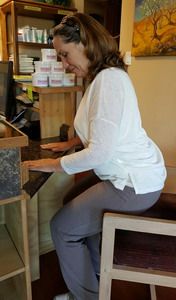 if the only activities you do are kept in your comfort zone, you will steadily degenerate – not as quickly as someone doing no exercise at all, but you will experience a slow downhill decline from staying comfortable. If you push yourself into doing activities that stress your
muscles with out-of-comfort-zone exertion, you can maintain your muscle tone, but not build muscle. To actually build muscle you have to push your exertion to the point of failure. It is only when you ask your body to do more than it can that it gets the message that it needs to build if the only activities you do are kept in your comfort zone, you will steadily degenerate – not as quickly as someone doing no exercise at all, but you will experience a slow downhill decline from staying comfortable. If you push yourself into doing activities that stress your
muscles with out-of-comfort-zone exertion, you can maintain your muscle tone, but not build muscle. To actually build muscle you have to push your exertion to the point of failure. It is only when you ask your body to do more than it can that it gets the message that it needs to build  more muscle. Staying within your limits does not do
this – it only tells your muscles that what you have is good enough. You have to demand more than you have to get the body to build more. more muscle. Staying within your limits does not do
this – it only tells your muscles that what you have is good enough. You have to demand more than you have to get the body to build more.
This information about muscle physiology becomes essential in light of the quote I started the article with: old people fall because of a lack of strength. There is no reason for a lack of strength as we age. Loss of strength is not a normal consequence of aging. Loss of strength is a consequence of not doing what is necessary to maintain strength. What is a consequence of aging is a gradual decrease in brain endorphin  production. That means we don’t block pain as well as when we are young. Plus we don’t heal as rapidly. Consequently we feel it more when we push ourselves past our limits. Most people, therefore, don’t push themselves as their years progress. Without that push the muscles get weaker every year until there is not enough strength to maintain our
balance. The side effects of falls are the major killer of the aged. production. That means we don’t block pain as well as when we are young. Plus we don’t heal as rapidly. Consequently we feel it more when we push ourselves past our limits. Most people, therefore, don’t push themselves as their years progress. Without that push the muscles get weaker every year until there is not enough strength to maintain our
balance. The side effects of falls are the major killer of the aged.
Fortunately science has discovered that we can achieve the push to make our muscles strong without the pain 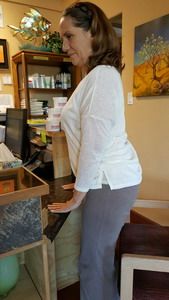 and suffering most people associate with keeping fit. It does not take hours in the gym or running around the neighborhood to keep us strong and balanced. In fact working out is not a natural activity for the human body.
Throughout human prehistory we had a pretty laid back existence with very brief periods of very intense activity. The only time we really super exerted ourselves was when we were running away from a predator about to sink its fangs into us. Now and then we would have to lift some very heavy boulders when the cave wife wanted to rearrange the furniture. and suffering most people associate with keeping fit. It does not take hours in the gym or running around the neighborhood to keep us strong and balanced. In fact working out is not a natural activity for the human body.
Throughout human prehistory we had a pretty laid back existence with very brief periods of very intense activity. The only time we really super exerted ourselves was when we were running away from a predator about to sink its fangs into us. Now and then we would have to lift some very heavy boulders when the cave wife wanted to rearrange the furniture.
Literally we only need to push past our limits for maybe 8 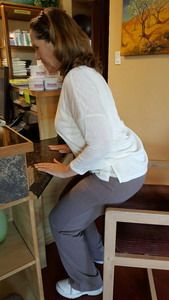 to 10 minutes one time every week to week and a half. One way to do this is with High Intensity Interval Training on a bicycle or elliptical trainer. Here you pedal as fast as you can for 30 seconds then rest for 2 to 4 minutes and repeat this 4 or 5 times. Do this a
couple times a week – so a total of only 4 to 5 minutes of serious exertion a week. This is good, but it does not build heart muscle strength. It makes the heart pump really fast – so fast the heart does not have time to fill with fresh blood each pump. That means at high heart rates that the heart is actually working less because it has less blood to pump per stroke. The heart gets stronger when it has greater blood volume to pump, not simply pumping
faster. to 10 minutes one time every week to week and a half. One way to do this is with High Intensity Interval Training on a bicycle or elliptical trainer. Here you pedal as fast as you can for 30 seconds then rest for 2 to 4 minutes and repeat this 4 or 5 times. Do this a
couple times a week – so a total of only 4 to 5 minutes of serious exertion a week. This is good, but it does not build heart muscle strength. It makes the heart pump really fast – so fast the heart does not have time to fill with fresh blood each pump. That means at high heart rates that the heart is actually working less because it has less blood to pump per stroke. The heart gets stronger when it has greater blood volume to pump, not simply pumping
faster.
 A better option is High Intensity Strength Training. You get all the cardio benefits of the heart pumping greater volumes of blood while also pushing the muscles to the point of fatigue/failure to trigger the release of hormones that promote greater muscle growth. With strength training you very slowly contract and extend the muscle
with enough resistance that you can only pump the muscle 4 to 7 times. That would mean a max of 120 seconds (2 minutes) per lift and generally applied to only 4 or 5 major muscle groups – hence the 8 to 10 minutes. A better option is High Intensity Strength Training. You get all the cardio benefits of the heart pumping greater volumes of blood while also pushing the muscles to the point of fatigue/failure to trigger the release of hormones that promote greater muscle growth. With strength training you very slowly contract and extend the muscle
with enough resistance that you can only pump the muscle 4 to 7 times. That would mean a max of 120 seconds (2 minutes) per lift and generally applied to only 4 or 5 major muscle groups – hence the 8 to 10 minutes.
Full recovery from this degree of intense exercise is just as important as the intensity. Depending on your genetics and physiology it will take 4 to 12 days to recover from the exercise and build new muscle. Doing this again before the recovery and build is complete  actually works against you and decreases your strength. More
is definitely not better. There is a very real Goldilocks zone with this type of training. You know when you are in this zone when you feel physically stronger and more energetic, and you are able to lift more or longer the next time you do the exercise. This is for full body strength. For fall prevention I suggest starting simpler and start with just the leg muscles using the squat exercise. actually works against you and decreases your strength. More
is definitely not better. There is a very real Goldilocks zone with this type of training. You know when you are in this zone when you feel physically stronger and more energetic, and you are able to lift more or longer the next time you do the exercise. This is for full body strength. For fall prevention I suggest starting simpler and start with just the leg muscles using the squat exercise.
The key to this exercise is to do them super slow – 10 seconds going down and 10 seconds coming up. For those of you that already have some leg weakness, start as though you are about to sit down at the table. If you 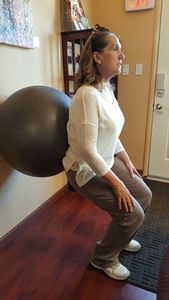 need to put your hands on the table to balance in the beginning, do so. Slowly lower yourself down to the
chair. Take 10 seconds to get down and immediately start right back up again – no pausing to rest. Take 10 seconds to come up and then immediately start back down again. At this speed you may find you cannot get all the way down to the chair and that is ok – go as far as you can. The trick is to make the movement super slow and continuous – no pausing. Go for up to 2 minutes only. If 2 minutes is easy, then next time find a lower chair or
stool, or even all the way down to your thighs. If 2 minutes is more than you can do, then just do what you can do and push to do a little more for a few seconds at the end. That’s it. need to put your hands on the table to balance in the beginning, do so. Slowly lower yourself down to the
chair. Take 10 seconds to get down and immediately start right back up again – no pausing to rest. Take 10 seconds to come up and then immediately start back down again. At this speed you may find you cannot get all the way down to the chair and that is ok – go as far as you can. The trick is to make the movement super slow and continuous – no pausing. Go for up to 2 minutes only. If 2 minutes is easy, then next time find a lower chair or
stool, or even all the way down to your thighs. If 2 minutes is more than you can do, then just do what you can do and push to do a little more for a few seconds at the end. That’s it.  Most people will need 7 to 9 days to recover. You may be sore the next day, but that should disappear quickly. If it is still sore 2 or
3 days later, then you pushed too hard and need to do less next time. Most people will need 7 to 9 days to recover. You may be sore the next day, but that should disappear quickly. If it is still sore 2 or
3 days later, then you pushed too hard and need to do less next time.
This protocol is ideal for strength training to prevent falls. You do not overload the muscles and cause muscle strain or tear, yet you push the muscles to failure, which is required for them to release the hormones to grow more muscle. The movement is infinitely adjustable to match your capabilities and find your max output. This allows for complete recovery and the growth of new muscle. It takes no special equipment, plus very little time. Could you find
two minutes a week to strengthen your legs and perhaps save you from a debilitating fall?
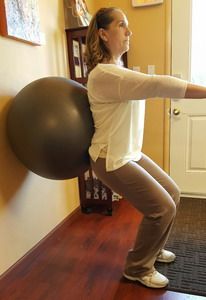
Once you get good at doing this at a table for stability, you might incorporate a bit of balance training by using a therapy ball behind your back against a wall and rolling the ball down and up again with your back – super slow. For you super fit folks that want a serious workout for serious leg strength, do one legged squats – super slow.
Two minutes a week or less for significant leg strength gains to prevent falls – it is doable.
Take care,
David
Ellen update:
 Despite the daily work of recovery, life continues with all the regular chores as well. In this case I am referring to our weekly pilgrimage to Costco for home and office needs. Since Ellen does not like the power carts, she has learned to push the regular cart while I push her in the wheelchair. Straight ahead is pretty easy, but getting around some of those corners is a
challenge.
Despite the daily work of recovery, life continues with all the regular chores as well. In this case I am referring to our weekly pilgrimage to Costco for home and office needs. Since Ellen does not like the power carts, she has learned to push the regular cart while I push her in the wheelchair. Straight ahead is pretty easy, but getting around some of those corners is a
challenge.
---------------------------------------------------------
Hayfever? Allergies? New relief!
We got in a new product two weeks ago that I have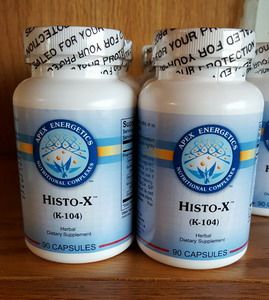 had several patients try out for helping with allergy symptoms. Their response has been a resounding "yes, this helps!" It acts like an antihistamine without any of the drowsy side effects of the usual meds. It
is a nutrient and herb base that really works - Histo-X. had several patients try out for helping with allergy symptoms. Their response has been a resounding "yes, this helps!" It acts like an antihistamine without any of the drowsy side effects of the usual meds. It
is a nutrient and herb base that really works - Histo-X.
|
| H |
| On the Wire |
|
Strength training decreases all causes of 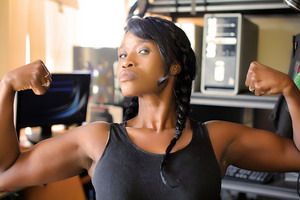 death 46%
Guidelines for strength training for older adults have only been around for a few years. Recent studies found 9% of older Americans engage in weekly strength training and those that do are 46% less likely to die that those who don’t strength train. Today’s article is to start you on strength training. death 46%
Guidelines for strength training for older adults have only been around for a few years. Recent studies found 9% of older Americans engage in weekly strength training and those that do are 46% less likely to die that those who don’t strength train. Today’s article is to start you on strength training.
Strength
_____________________________________________
"Be sure you put your feet in the right place, then stand firm."
~ Abraham Lincoln
__________________________________
Sleep aids promote dementia All those over the counter medications that say PM after their name because they are designed to help you get a good night sleep are putting parts of your brain to sleep forever. The class of drugs called anticholinergic meds has been shown by many studies now to increase dementia in the elderly. Many other sleep aids as well as certain meds for incontinence, asthma, motion sickness, COPD, blood pressure, and more contain
this class of drugs. Consider alternative medications. Here is a general overview:
Anticholinergic
Dementia
______________________________________________
All those over the counter medications that say PM after their name because they are designed to help you get a good night sleep are putting parts of your brain to sleep forever. The class of drugs called anticholinergic meds has been shown by many studies now to increase dementia in the elderly. Many other sleep aids as well as certain meds for incontinence, asthma, motion sickness, COPD, blood pressure, and more contain
this class of drugs. Consider alternative medications. Here is a general overview:
Anticholinergic
Dementia
______________________________________________
"Strength and growth come only through continuous effort and struggle."
~Napoleon Hill
_______________________________
Mosquito killing billboards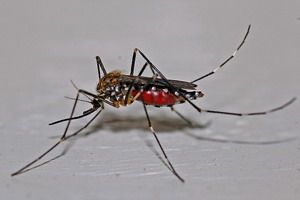 Warmer weather is coming, and with it mosquitoes. In many parts of the world that means malaria or zika virus, but here in California we have our own nasty critters like west Nile virus. Down in Brazil they have invented a billboard that attracts and kills mosquitoes from over a mile away.
Warmer weather is coming, and with it mosquitoes. In many parts of the world that means malaria or zika virus, but here in California we have our own nasty critters like west Nile virus. Down in Brazil they have invented a billboard that attracts and kills mosquitoes from over a mile away.
Mosquito
_______________________
"Strength does not come from winning. Your struggles develop your strengths. When you go through hardships and decide not to surrender, that is strength."
~ Arnold Schwarzenegger
________________________________________________
Our address is 9725 Fair Oaks Blvd.
Our hours are M - F 9 to 1 and M, Tu, & Th 3 to 6
Finding the new location is very easy. Coming from highway 50 up Sunrise Blvd, you turn left and go up a block. We are on the right hand side - the building just past the Subway Sandwich shop. If you are coming down Sunrise from the Mall area then just turn right on Fair Oaks Blvd and up a block on the right.
If you are coming from the Roseville area you could come down Sunrise Blvd, but that is a long trek. It is probably shorter time wise to come down Auburn Blvd - San Juan Ave like you have been for the Sunset office, but instead of turning left at Sunset, keep going straight 3 more lights to Fair Oaks Blvd and turn left. Go down 2 lights to New York Ave, go through the intersection, and immediately turn into the turn lane once the center
divider ends. We are on the left.
You are free to reprint this article in your newsletter as long as you include the following statement in the same size type and color:
"This article appears courtesy of Fair Oaks Health News, offering natural and healthy solutions for body, mind and soul. For a complimentary subscription,
visit http://www.fairoakshealth.com"
|
| |
|
|
|
_______________
to check on old newsletters
_______________
About Dr. DeLapp
|
Dr. DeLapp has been a philosopher, non-force Chiropractor, medical intuitive, and health innovator for over 30 years. He began experimenting with medical intuition in 1972 while studying physics at UC Davis. In addition to physics he designed and completed an individual major in the philosophy and psychology of education. Shortly after he choose to pursue a career in the only
truly health oriented profession available at that time, Chiropractic. He graduated with honors in 1981 with his doctorate and opened a private practice.
Since that time he has continued his research into the effects of consciousness and learning on health.
He developed the Biomagnetic Retraining system for correcting movement abnormalities.
Since 1991 he has focused on developing a powerful system for uncovering and assisting the mind-body connection in health and personal growth. The in-depth coaching, guided by the subconscious direction from the body, is called Heartflow and the simpler mind-body retraining for health and unfoldment he has named Gracework. Both are available at Fair Oaks Health.
Fair Oaks Healing
& Arts Center
Staff
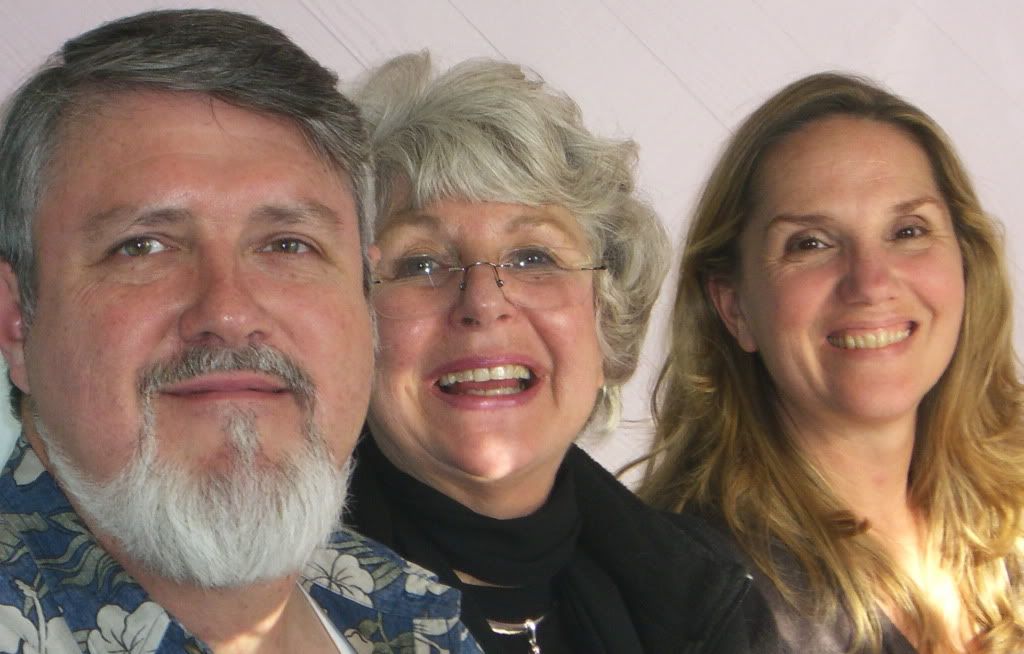 Dr David DeLapp DC
Dr David DeLapp DC
Chiropractor
Ellen Flowers FGM
Spiritual Life CoachEnergetic Nutritionist
Health Care Coordinator
Susan Richardson
Office Manager
Front Desk
Sherry Herrera
Front Desk Person
Susan McDonald
Catherine Cummings
Is there a sweet that is not poisonous? Yes!
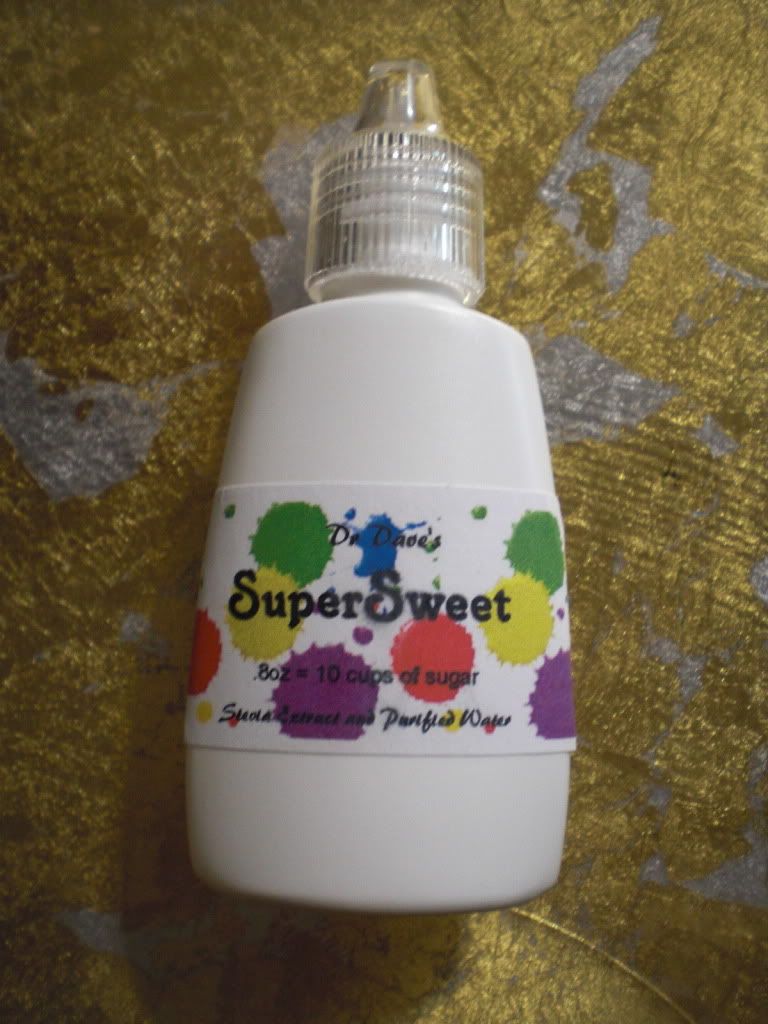 Dr Dave Supersweet Drops and 2X Sugar Substitute
Dr Dave Supersweet Drops and 2X Sugar Substitute
New Products
Flax Lignans

Root Beer
 Safe Antiperspirant
Safe Antiperspirant

|
|

